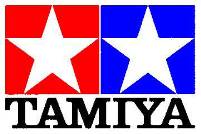1977 Lotus 78 J.P.S. mkIII
Colin Chapman was known to be an avid reader. When an idea got in his mind he would read every piece of information he could lays his hands on until he knew the subject inside out. Aerodynamics was one of those subjects that mystified many but Chapman had been around Frank Costin’s aerodynamic ideas for years and became engrossed by the subject. So much so that he even read reports on the design of WWII aircraft aero’ performance and he was particularly fascinated by the wing mounted radiators of the de Havilland Mosquito fighter bomber.
Having begun the march to aerodynamic air penetration with the wedge shape Lotus 56 turbine car and pushed the envelope further with the 72, Chapman was sure to carry the idea further. But the aged 72 was flagging and the 77 proved rather toothless. A fresh look at the subject was needed.
Careful study of Bernoulli's principle of fluid dynamics confirmed Chapman’s idea that an upturned wing profile, housing the cars radiators, would produce negative lift and actually suck the car down onto the track. A design team of Tony Rudd, Ralph Bellamy, Martin Ogilvie and Peter Wright was put to work on developing the idea.
Having previously studied the principle while working at BRM Rudd and Wright had a head start on the subject. Although they had tested scale models at BRM they had never had the stability or funding to study the idea fully. All that was different now and Wright brought all the information back to mind and coupled it with the best testing facilities available at the time. Wind tunnels and rolling roads helped the team understand the principles and measure the amount of downforce they could generate. The final design was the Lotus 78 and in testing it was phenomenal.
Mario Andretti wanted to run the car as soon as it was available in mid 1976, but realising that the ‘76 season was already lost Colin Chapman overruled him in order to save the maximum effect of surprise and performance advantage for 1977.
Chapman was right, the 78 was all but uncatchable. It took 5 wins that year but was hampered by reliability problems. Everyone wanted to know the secrets of the car and the team went to great lengths to spread false rumours about the car knowing that the real reason was safely hidden away out of sight underneath the car. The competition were desperate to design their own versions of the 78 but they didn’t know what it was they were supposed to copy!
For 1978 the car was improved further and then developed into the Lotus 79. They won 7 races that year and took first and second places in the drivers championship. Lotus seized the Constructors championship with 86 points, 28 ahead of second place Ferrari.
Chapman’s real genius was not the ideas he came up with, many of the ground breaking initiatives were not his at all, but that he could find solutions to implement the ideas better than anyone else.
1/20th scale kit.
Built by Ian.


Tamiya kits probably provide the best models to learn on as they are so well engineered. The parts fit together well and the detail level is excellent. Tamiya also provided extremely good instruction sheets that are easy to follow and very clear. That said, the decals are an odd colour in this kit, neither gold, as the appear on T.V. or in photographs, nor the biscuit cream colour they are to the eye in real life. Considering this kit is only the fourth kit in Tamiya's 1/20th scale range, evidenced by its kit number 2004 released in 1977 it is forgivable and there are several aftermarket decal sets with the real biscuit colour decals on.
Another interesting thought is the title of the kit which points very much to the thinking of the period. Lotus might have called the car by its number in the design line, but to the press and public it was the sponsors name that had the weight behind it. For Lotus 78, read John Player Special mkIII. The black and gold colour scheme is now a motorsport classic and the this car was the third in the line of cars sponsored by JPS. What is often lost in the mists of time is the fact that the colour scheme was used on other cars too, not just Lotus cars like the Elite or limited edition road cars like the Lotus Esprit. JPS can also be seen on Jaguar cars competing in Australia and at the Macua races too; just to name a few.
This model is another of Ian’s earliest F1 car models. He was just starting to read model making magazines back in the early 1990s and trying to learn the techniques displayed within them. Brush painted with Humbrol enamels this model finish is better than the Williams FW07 Ian made first, the secret to getting a decent brush finish with enamels is always brush in the same direction, takes more planning than you might think but it gives the paint a better change to flow and settle evenly.
The wiring came with the kit. Ian’s attempts to add realism are the painted on labels. A lot of the ideas one has for improving models come from the experience of having a go. Somethings work some don't, and usually the hardest part of any detail work is taking the decision to do it. Once you start and are committed it's seldom as hard as you thought it would be.
RETURN TO -